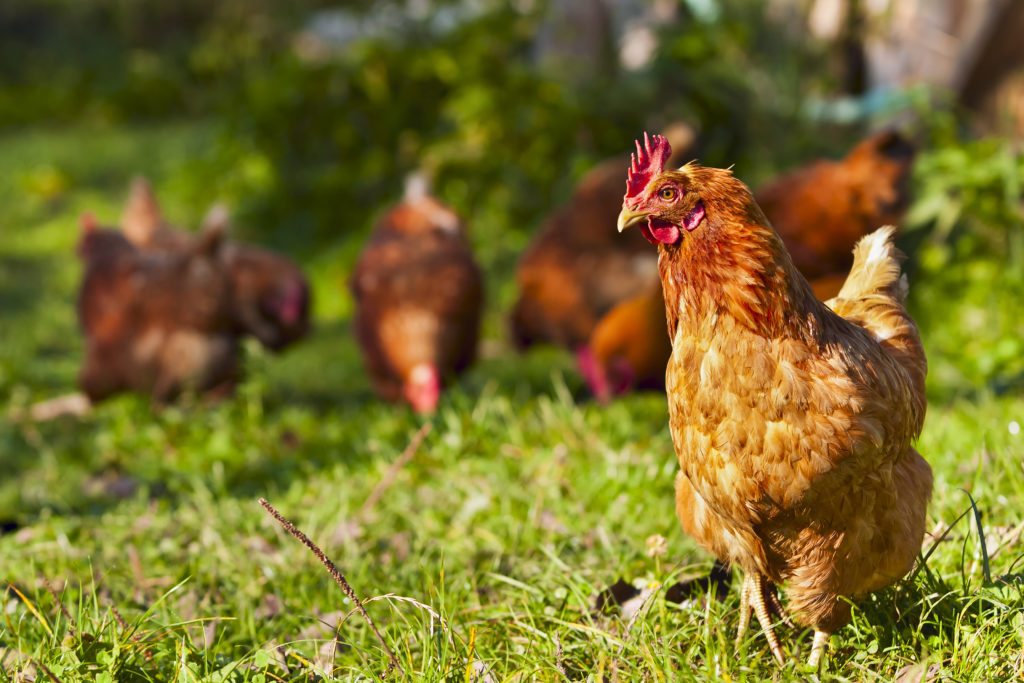
Chickens can come home to roost in Waukee, but not roosters, after approval of an urban chicken ordinance in November.
The Waukee City Council passed the measure, 4-0, allowing chickens on one- and two-family lots. (Councilmember Shelly Hughes was absent.)
It’s a single-gender proposition—six hens maximum, no noisy roosters. According to the Waukee Backyard Chicken page on Facebook, chickens are relatively quiet. Human conversation has a 60-decibel level; chickens peak at 70; barking dogs, 90; crying babies, 110; and squawking parrots, 135.
After filing an application, the ordinance requires completion of an Iowa State University Extension and Outreach online course.
The 21-minute, audio-slide presentation is designed to separate dedicated chicken enthusiasts from wannabes. It includes advice on breeds, their care and feeding, as well as the color of eggs desired. It also details costs—coop, feed, bedding, heat lamps and more.
A short survey follows for certification.
A petition drive previously sought a backyard chicken ordinance in Waukee in 2013, but “kind of died on the vine,” said Brad Deets, Waukee Development Services Director.
A letter to the council then seeking support stated, “Owners of hens prize them as any other pet. Some for their personality, others for their heritage and others for their colors and patterns. Hens, unlike roosters, are friendly, entertaining and quiet… Hens are also part of some citizens’ wish to live a ‘greener’ lifestyle. They readily eat table scraps (keeping them from ending up in landfills), are a natural insect control of lawns, and also provide eggs for the family they live with.”
The latest request began 18 months ago, according to then-councilmember Courtney Clarke. She received 16 emails supporting “urban poultry,” but was “completely against it” at first.
“The more I listened to the people who spoke with us, I realized that a kneejerk reaction was not what was needed,” she said. “We found that a lot more people already had chickens here than we knew, although it was technically not allowed.”
The council asked city staff to devise an ordinance emphasizing responsible ownership—what Clarke called “neighborship.”
A complaint last summer created an enforcement issue, moving matters along. The city generally issues a warning, but an ordinance violation carries a potential fine of up to $750 per day, depending on the discretion of a district court judge.
Meanwhile, Des Moines allows up to 30 birds (on less than an acre), Cedar Rapids, six, and Sioux City, 50. Some nearby cities simply decree “chickens may not run at large.”
Deets said Waukee’s ordinance relied on model ordinances, but its “unique aspect” is the ISU extension course narrated by Christa Hartsook, its small farms coordinator.
“Sometimes people want to get into it and don’t realize all the upkeep it takes,” said Deets..
Hartsook provides plenty to think about.
Chickens can be good pets for children while providing lessons in recycling. Leaves, weeds, food scraps and manure in a bin with bedding can become compost in a small garden.
Factors in choosing a breed include disposition, maximizing egg production and egg color. “Hybridized brown-egg-layers,” Hartsook said, are “docile, quiet, adaptable and incredibly productive.”
Some people buy day-old chicks and others purchase pullets—chicks becoming hens at one year—which should come from reputable hatcheries and have vaccinations for common illnesses.
Then there’s egg color—white, brown, dark chocolate or Easter eggs (pale blue, pink or yellow).

Costs include the coop, heat lamps (preferably with a red bulb), thermometer, waterers and an incubator for chicks raised from scratch.
Waterers need to be easily accessible, but keep young birds from drowning. Heat lamps shouldn’t become fire hazards. The birds will determine the lamp’s height—if clustered together, they’re cold; if scattered, it’s too hot.
Food costs $12 to $15 for 50 lbs., based on type. Chickens will eat about 8 ounces per day, depending on the breed. Pine beddings for litter run around $5 per cubic-foot bale.
Hartsook equates constructing a coop to “Fort Knox in 700 easy steps”—“an impenetrable fortress”—while some prefabricated coops cost $1,500.
Predators must be thwarted. “Almost any animal with a backbone or pointy feet is interested in eating a chicken,” she said.
According to an ISU poll, 92 percent of chicken enthusiasts raise them for eggs; 72 percent for pets; 42 percent for bug control; 38 percent for manure; and 27 percent for meat.
The Centers for Disease Control and Prevention have warned about possibly contracting salmonella. In 2016, 250 chicken and duck hobbyists were hospitalized and one died.
A “large contributing factor,” CDC veterinarian Megin Nichols stated, was people treating birds like pets, kissing or snuggling them and letting them walk around the house.
Poultry can carry salmonella bacteria in their intestines and shed it in their feces. The bacteria attach to feathers and dust and brush off on shoes or clothing.
Prevention is basic: Wash hands thoroughly after handling birds, eggs or nesting materials. Leave shoes worn in a coop outside.
In Waukee, once a backyard chicken application is made, Deets said, a compliance officer will check if things are in place, and annual inspections will take place thereafter.